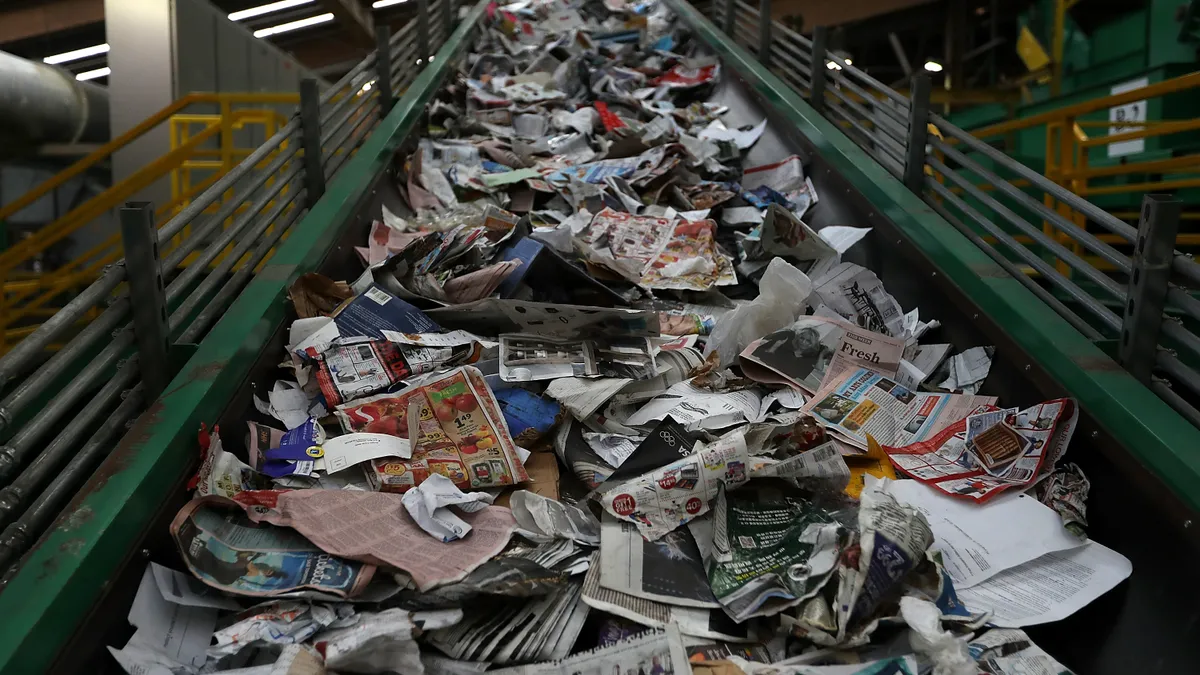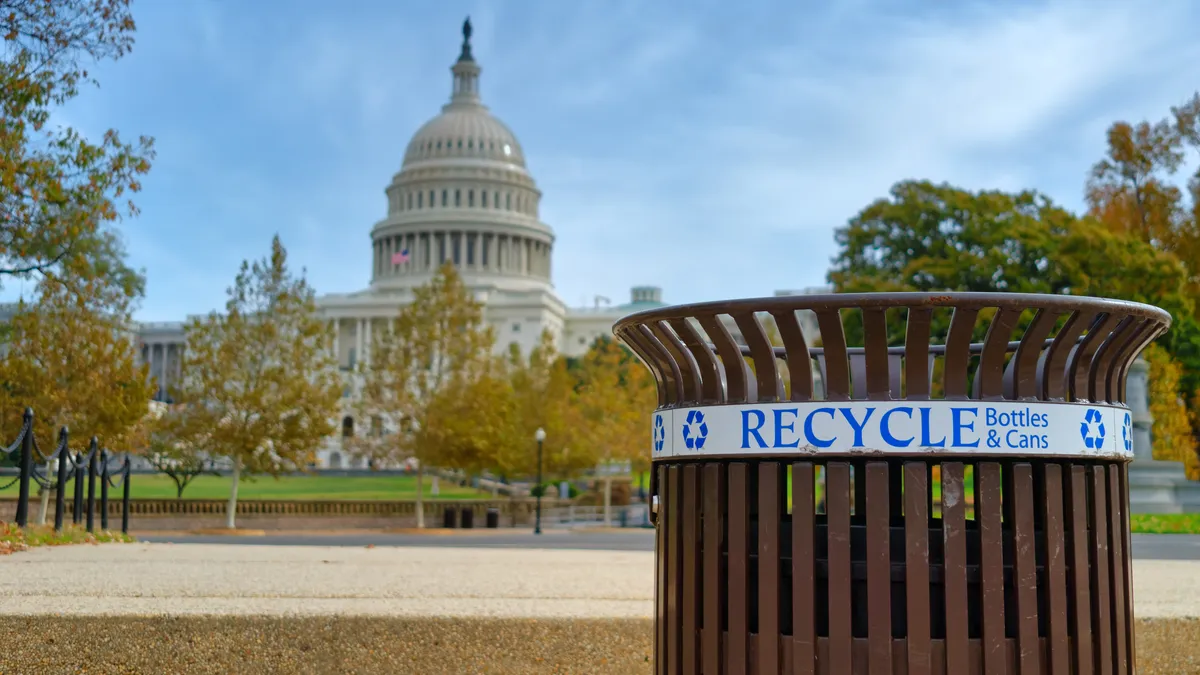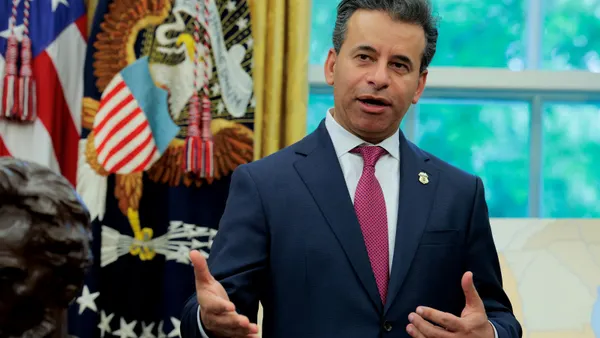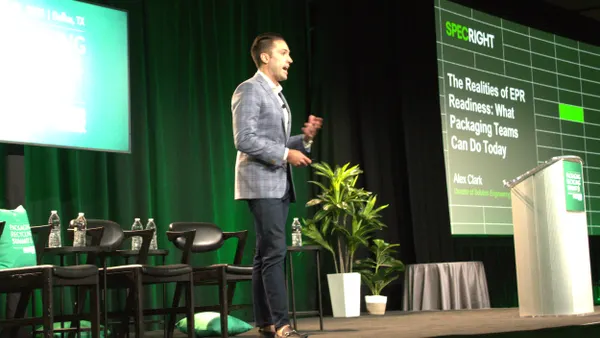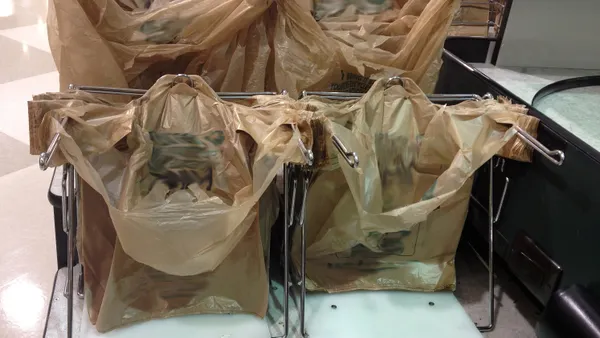Two bills with competing strategies for managing packaging waste in Hawai’i are stalled in committee and likely won’t pass this year, according to supporters. Yet proponents of both initiatives say the legislation shows the state is serious about finding solutions that work for the islands’ unique needs.
Packaging groups have generally opposed the bills, while waste haulers have not appeared to engage much this year.
One bill, HB 1326, includes some extended producer responsibility for packaging elements similar to programs proposed in other states. It calls for a statewide needs assessment and the introduction of a new advisory committee and producer responsibility organization. The groups would work with the Department of Health to hammer out more detailed EPR legislation by the end of 2026. It also calls for prioritizing reuse and refill programs as part of a goal to reduce packaging waste disposal 70% by 2035.
A competing bill, SB 1458, would require major packaging producers to pay into a temporary fund meant for waste reduction and reuse projects at the county level. This bill nearly became law last year, but legislators did not reconcile bill differences before the end of the 2022 session. The “transitional” program does not include a PRO and is meant to sunset after five years. The model is so different than other EPR programs proposed or passed in the United States that some opponents say the proposal should not even be considered EPR.
“The bills represent two very different approaches, and the zero waste movement is split over which is better,” said Kristine Kubat, executive director of Recycle Hawaii and a major supporter of SB 1458, the temporary fund bill.
Both bills are stalled in the Senate Committee on Ways and Means and won’t be taken up again until sometime next year, Kubat said. The bills won’t have a chance of passing if they cannot make it out of that committee, meaning some organizers will likely spend the off season building necessary support or consider if they should reintroduce similar legislation next year.
The competing bills represent different visions for how Hawai’i should manage its waste, but both camps say the state needs solutions that are different from ones the mainland states have adopted for EPR and other packaging initiatives. The state has an isolated recycling market and limited space to manage materials, plus each island may use a different, county-specific system to manage such waste. Hawaii also faces complex or expensive options for shipping recycling and waste off-island.
Reuse and refill elements are critical to the success of either bill because that could cut down Hawai’i’s waste at the source, some stakeholders say.
Peter Blair, policy director of Just Zero, said HB 1326 — the bill with more traditional EPR elements of the two — has the best chance of making an impact on that front. “Given Hawaii’s geographic isolation, the bill prioritizes a transition to a circular economy” by giving it a reuse and refill lens, he said in an email. Kubat said SB 1458, the bill requiring producers to pay into a reuse fund, had better potential for concrete infrastructure improvements that might have helped attract private sector funding and innovations to “make Hawaii the Reuse State.”
HB 1326: Diverting packaging from disposal through EPR and reuse plans
- HB 1326 calls for a “producer-funded packaging reduction, reuse and recycling program” with a packaging EPR component. The original bill focused mainly on establishing reuse policies and programs, but a series of amendments and advocacy from packaging organizations broadened the focus to allow for the PRO to form and make other EPR-centric changes.
- The most recent version of the bill that passed the House called for establishing a nonprofit producer responsibility organization, as well as a packaging waste advisory council, to help the state health department draft legislation laying out details of the EPR program.
- The health department would have had until December 31, 2026, to submit draft EPR legislation to the state legislature. The bill specifies that the program should prioritize packaging reuse and refill programs.
- Supporters like Upstream saw the bill as a way to establish “a strong framework for packaging EPR in Hawaii” because of “ambitious” waste reduction and reuse goals. A coalition of sustainability groups also supported the bill.
- Yet some producers and packaging organizations opposed it, saying it doesn’t offer enough details on how the EPR portion would work. American Beverage said in its testimony that the bill “in no way aligns with our principles or with a common understanding of extended producer responsibility.” The Foodservice Packaging Institute, Plastics Industry Association, Consumer Brands Association, Ameripen and American Chemistry Council also opposed the bill.
SB 1458: Taxing packaging producers to fund reuse infrastructure
- SB 1458 focused on raising money for reuse infrastructure by encouraging major producers to partner with local governments to innovate on reuse strategies.
- The bill would require certain producers of “fast-moving consumer goods” to register with the health department and pay a tax of $100 per ton of packaging put into the local market each year.
- The tax applies to companies that either have global annual gross sales above $500 million or generate a total of more than 10,000 metric tons of packaging waste a year.
- Last year’s bill proponents said the tax range was meant to protect smaller, Hawai’i-based companies, but some Hawai’i-based food manufacturers and merchant associations still opposed the bill this year, saying the bill doesn’t adequately exempt them from the tax. Groups like American Beverage, the Product Stewardship Institute, Consumer Brands Association and Ameripen also opposed the bill.
- Each of Hawai’i’s counties would be able to use the funds for reuse and waste reduction programs, but they must submit a required needs assessment describing how the project will meet waste reduction goals such as diverting material from landfill or incineration, according to the bill.
- Supporters included local environmental groups and several county departments of environmental management.



